CHINA SCIENCE AND TECHNOLOGY
NEWSLETTER
The Ministry of Science and Technology
People's Republic of China
|
|
|
N0.643 |
January 20, 2012 |
|
|
|
|
|
|
|
|
IN THIS ISSUE
|
|
*Han Lin Cup Top Ten S&T Events for 2011
*WAN Met with U.S. Guests
*New Method for Space X-Ray Communication
*Grid Inverter for Solar Power
*Resources-3 Produced Its First Map
*New Weather Satellite Launched
|
Han Lin Cup Top Ten S&T Events for 2011
Han Lin Cup Top Ten S&T Events selected by academicians of Chinese Academy of Sciences and Chinese Academy of Engineering for 2011 were unveiled on January 17, 2012.
1. Tiangong-I made a successful docking with Shenzhou-VIII
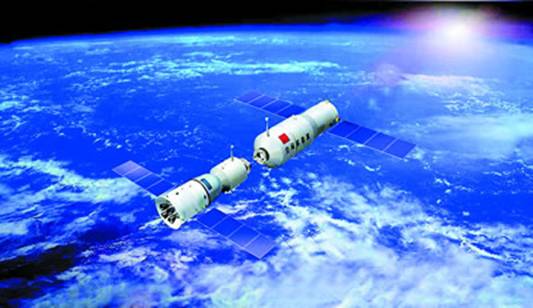
At 0136, 3 November 2011, Shenzhou-VIII capsule made a successful docking with Tiangong-I, a Chinese made target spacecraft. It took 8 minutes for the two spacecraft to complete the procedure from docking to locking. After that, Tiangong-I was told to realign its attitude for a combination flight, during which a range of scientific experiments were made. At 2000, 14 November, the two spacecraft docked with one another again under the precision control of the ground control in Beijing. The docking mission tested the functionality and performance of the docking mechanism and associated measuring equipment, and collected the needed data. At 1932, 17 November 2011, Shenzhou-VIII capsule landed on the main landing site in Siziwangqi, Inner Mongolia, successfully ended the docking mission, and became another country mastering the space docking techniques, following the United States and Russia.
2. Manned submersible hit the depth of 5000 m
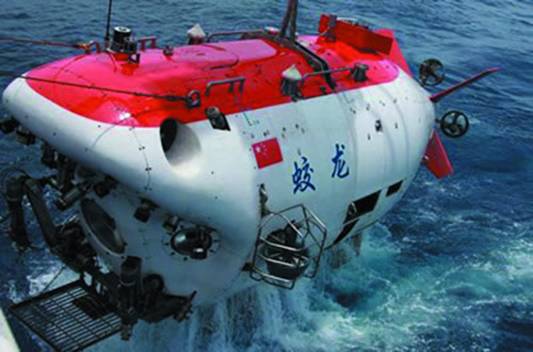
"Dragon", a Chinese made submersible, successfully dived to a depth exceeding 5,000 m in a second trial launched in the morning of July 26, 2011. 96 researchers from 13 institutes attended the sea trials, during which 5 dive operations attended to by 8 persons were made, reached a depth of 4027m, 5057m, 5188m, 5184m, and 5180 m respectively. The submersible made multiple landings at seafloor, and completed a range of missions, including taking pictures and videos of seafloor, measuring submarine topography, collecting marine environmental parameters, and gathering seabed samples at selected sites across the polymetallic nodule exploration contract zone granted to China Ocean Society.
3. Super hybrid rice exceeded unit yield of 900 kg

A field trial of super hybrid rice, led by YUAN Longping, an academician of Chinese Academy of Engineering, has resulted in a unit yield exceeding the mark of 900 kilograms per mu (1 mu= 0.0667 hectare). Located in the Leifeng Village, Longhui County, Shaoyang City, the one hundred-mu experiment site was divided into 18 plots, or 107.9mu in all. A formal harvest was made on September 18, 2011, with an averaged per-mu yield at 926.6 kg.
4. China’s first superconducting substation
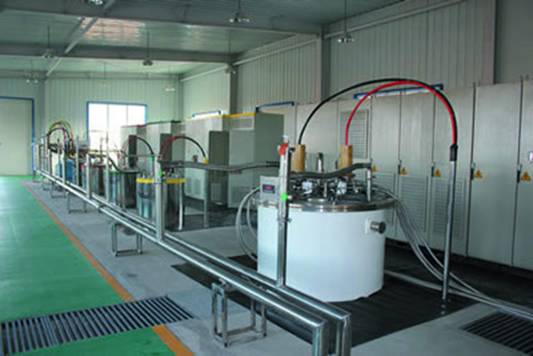
China's first superconducting substation, built by Chinese Academy of Sciences Institute of Electrical Engineering, was put into operation and became part of power grid on April 19, 2011 in the Baiyin City, Gansu Province. The superconducting substation, also the first of its kind in the world, makes China the first country in the world that put a superconducting substation into operation. The substation, working on an operating voltage of 10.5 kV, is integrated with a range of novel superconducting devices, including a superconducting energy storage system, a current limiter, a transformer, and three-phase AC HTS cables, to greatly enhance the grid safety and power supply quality, with a reduced system loss and area for housing the system. Also derived from the project are some 70 intellectual property rights on core and key technologies.
5. New brain nerve networking mechanism found
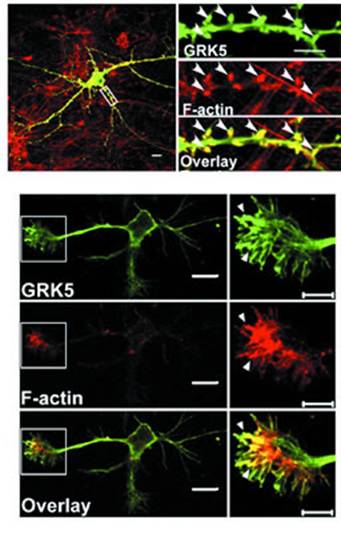
A study team, led by Prof. MA Lan at Fudan University Institute of Brain Science, found through a three-year study that GRK5, a G protein coupled receptor kinase, is critically involved in neurite outgrowth and dendrite branching. The finding revealed a role played by GRK5 in the nervous system, and a new mechanism regulating neuronal morphology and plasticity, which creates a new way of thinking for developing drugs treating autism and Down syndromes caused by neuronal abnormalities. The finding was published in the journal of Cell Biology as a cover story. The paper is also recommended by "Faculty of 1000" as a "must read" paper. The finding also appeared in Science Signaling with a commentary.
Researchers found that GRK5 has a new feature that may promote the morphological development of neurons, and confirmed that GRK5 is a major protein meant for promoting the formation of neural network, and regulating learning and memory functions in the brain. The finding makes a new target available for developing the drugs to treat the diseases caused by neuronal abnormalities.
6. Largest laser rapid manufacturing equipment

A powder bed based laser sintering rapid manufacturing equipment (1.2m×1.2m), developed by a team led by SHI Yusheng at Huazhong University of Science and Technology, makes the largest of its kind in the world, exceeding the counterparts manufactured in Germany and the United States. More than 200 domestic and overseas clients have procured and applied the technology and associated equipment. Some domestic foundry businesses have shortened the cycle to deliver complex castings from regular three months to 10 days, with the help of the technology. Meanwhile, large six-cylinder diesel engine makers in the country have shortened the development cycle of cylinder head sand core from 5 months using a conventional technique to a week using the new technique. The technology has been chosen by Airbus to assist the rapid manufacturing of large titanium alloy aerospace structural parts.
7. New targets found for liver cancer prognosis and treatment


A team, led by CAO Xuetao, a Chinese Academy of Engineering academician and head of National Key Lab on Medical Immunology, and their collaborators published an innovative finding in the journal Cancer Cells, reporting that an in-depth analysis of miRNomes in human normal liver, hepatitis liver, and hepatocellular carcinoma (HCC) shows that the expression of microRNA-199 is closely associated with liver cancer patients’ prognosis. The finding, proving that microRNA-199 can inhibit the growth of hepatoma cells by inhibiting liver cancer kinase, and further inhibiting the downstream signaling pathway, has sorted out a new potential target for liver cancer diagnosis and associated biotreatment.
Experts believe that the microRNAR data derived from the study for both normal and diseased livers laid groundwork for further studying the role played by microRNA in liver physiology and liver diseases.
8. First fast reactor in grid
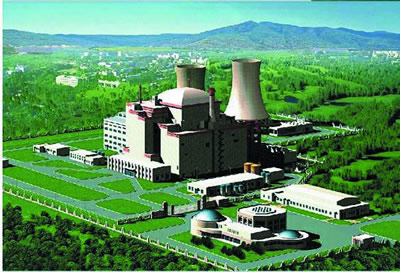
China Experimental Fast Reactor, built by China Institute of Atomic Energy, started to generate power and became part of the power grid at 1000, 21 July 21 2011. The pool-type reactor with a thermal power of 65 MW and an experimental electric power of 20 MW is one of the few high-power experimental fast reactors able to generate electricity in the world. It is designed with a mainframe configuration and a parameterization plan similar to the one applied to a large power plant using fast reactors. The advanced fuel cycling system powered by the fast reactor enjoys the strength in two aspects: first, it significantly improves the utilization of uranium from 1% at a pressurized water reactor to 60% or above; second, it changes the evolution of long-lived radioactive waste generated at the pressurized water reactor, for the minimized radioactive wastes.
9. First ultra deep water oil rig delivered in Shanghai

“Haiyang Shiyou 981”, a semi-submersible drilling platform able to hit a water depth of 3,000 m, developed by China Shipbuilding Industry Corporation Shanghai Waigaoqiao Shipbuilding Co., Ltd., was named and delivered on 23 May 2011 in Shanghai. As a state-of-the-art semi-submersible drilling equipment in the world (6G) with an investment worth RMB 6 billion, the platform will be employed to work on deep water oil drilling operations in the South China Sea. Designed with a maximum operating depth of 3,000 m, a maximum drilling depth up to 12,000 m, the platform, 114 m long, 90 m wide, and 137.8 m tall, occupies an area larger than a standard football field with a height equivalent to a 43-story building. The rig is also equipped with the most advanced DP3 dynamic positioning system and satellite navigation system.
10. Deep probe opens a new era for earth science
China has established a magnetotelluric array network covering mainland China, under a special deep probe project. The network is designed with a control framework at 4°×4° (longitude × latitude) covering the country, with 1°×1° for the experimental areas in the northern part of the country. Meanwhile, a technical system meant to probe the fine structures tailored to mainland China geological features has been preliminarily completed. A nationwide geochemical reference network built in line with international standards was also established, along with an accurate earth crust analysis system able to measure 81 indicators (including 78 elements), the first of its kind in the world. In addition, Chinese scientists improved stress measurement techniques, in a bid to understand the rhythms of crust activities, and the causes of today's earthquake and geological disasters.
|
INTERNATIONAL COOPERATION |
WAN Met with U.S. Guests

January 9, 2012-- WAN Gang, Chinese Minister of Science and Technology, met with Craig Mundie,Microsoft Chief Research and Strategy Officer and a member of U.S. President’s Council of Advisors on Science and Technology (PCAST), and his party. The two sides exchanged views on a range of issues, including innovation dialogue, S&T cooperation, and information technology R&D and associated industrialization.
New Method for Space X-Ray Communication

Novel deep space XCOM.
Not long ago, ZHAO Baosheng and coworkers at Chinese Academy of Sciences Xi'an Institute of Optics and Fine Mechanics rolled out a novel X-ray modulation source and a microchannel plate based X-ray detector, with the former as a transmitter and the latter a receiver, to work on deep space X-ray communications.
The new X-ray modulation source is a technical combination of vacuum transistors and X-ray tubes to achieve a high-speed modulation, with a theoretical emission bandwidth up to 50G Hz. Meanwhile, the microchannel plate based X-ray detector enjoys numerous merits, including quick response, expanded receiving area, smaller minimum detectable power among others. Using the technology, one can achieve a space transmission up to 6,000 km with an X-ray divergence angle under 2 mrad, an X-ray photon energy larger than 20 keV, and a X-ray emission power at 100 mW.
Additionally, the Institute has developed a voice communication based digital verification system for X-ray transmission, including an X-ray transmitter and receiver, allowing voice communication to work either under OOK mode, or under PWM mode. In the experiment, the communication speed reached 64 kilobits per second in a 6-m long vacuum tube.
Grid Inverter for Solar Power
Thanks to 3-year collaborative efforts, Fudan University, South China University of Technology, and Shanghai Jiaotong University jointly developed 10 proprietary megawatt grid inverter products under three products lines. The products have been granted with grid permits issued by seven countries, including Germany, Britain, and Spain, and passed the certification checks of a number of international organizations, including PHOTON, VED, and BV. Certified by the "Golden Sun" Program at China Quality Certification Center, the products have been used at a large demonstration photovoltaic power plant sitting in the southern mountainous area with an elevation of 3887 m in Tibet.
In the past three years, the inverters employed in domestic and overseas demonstration photovoltaic power plants have reached an installed capacity exceeding 600 MW on a combined basis, with an economic return up to RMB 900 million. Under an approaching technical performance, the products enjoy a price 1/3 of the German products’. Researchers have applied for 6 patents for the technologies they developed. They are currently working on a brand new product line resistant to corrosion and harsh weather conditions.
Resources-3 Produced Its First Map

Multi-spectral image of Jiayuguan derived from Resources-3 satellite.
Resources-3 satellite was launched on January 9, 2012. It opened the onboard camera on January 11, and sent three-line array full color images (front, vertical and rear views) and multi-spectral images (red, green, blue, infrared) to the ground station. Prof. ZHANG Zuxun, a Chinese Academy of Engineering academician, and coworkers at Wuhan University extracted L0 level multi-spectral image data and full color image data using the proprietary software they developed. One hour later, researchers successfully produced the three-dimensional digital elevation models of first scenes and digital orthographic products, before rolling out other products, including multi-spectral fusions and standard map sheets to generate the first image derived from Resources-3 satellite.
The satellite is equipped with a three-line array mapping camera and a multi-spectral camera, to generate three-dimensional mapping images. The three-line array mapping camera would produce a front and a rear panchromatic image with a ground resolution at 3.5 m, a vertical image at 2.1 m, and a multi-spectral image at 5.8 m, desirable for producing satellite imageries and related geographic information products with high positioning accuracy and high-quality.
New Weather Satellite Launched
At 0856, 13 January 2012, China blasted off a new weather satellite (FY-II-07) aboard a CZIIIA launch vehicle, from the Xi’chang Satellite Launch Center. 24 minutes after lifting off, the Xi'an ground control received the data showing that the satellite was separated from the carrier rocket, and entered a geosynchronous transfer orbit with a perigee of 211 km, an apogee of 36,139 km, and an inclination at 24.4 degrees. A series of instructions from the ground control ultimately pinned the satellite at a position 112 degrees east above the equator. The all-weather satellite is designed to monitor weathers in a continuous manner, collecting and transmitting meteorological, oceanographic, and hydrological data, and keeping watch on the space environment.
Comments or inquiries on editorial matters or Newsletter content should be directed to:
Department of International Cooperation, MOST 15B, Fuxing Road, Beijing 100862, PR China Tel: (8610)58881360 Fax: (8610) 58881364
http://www.most.gov.cn

